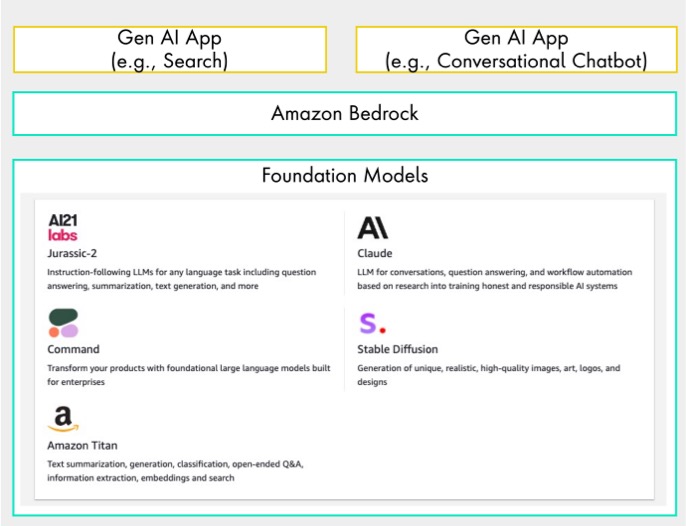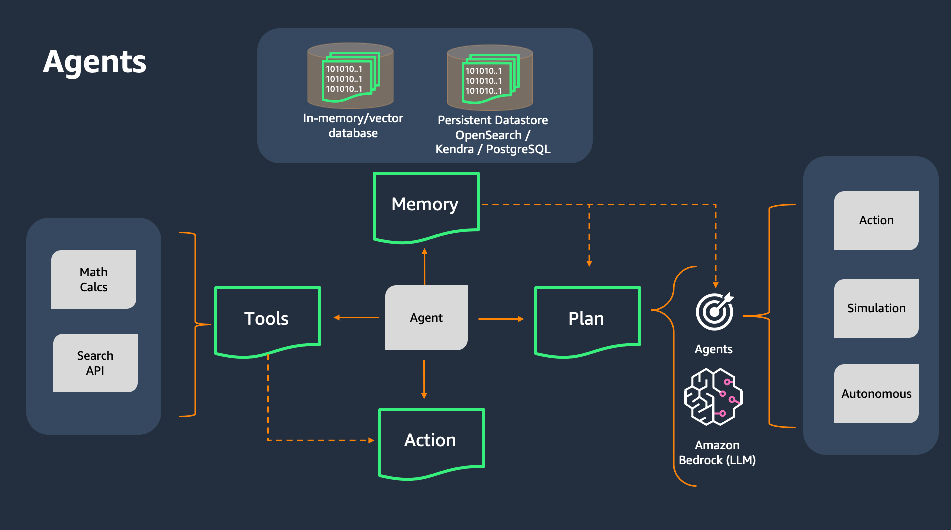What issue can we solve for you?
Type in your prompt above or try one of these suggestions
Suggested Prompt



Insight
Elevate Your AI Journey with Amazon Bedrock: Unraveling The Key Features
Elevate Your AI Journey with Amazon Bedrock: Unraveling The Key Features
Publicis Sapient's Ankur Kumar summarizes key features that help enterprise organizations elevate their AI journey.
Amazon Bedrock, which was announced in April 2023, has drawn a lot of attention from businesses looking to leverage their existing AWS architecture for building Generative AI applications. Amazon announced the General Availability (GA) of Bedrock on September 28 — a service that offers a choice of Generative AI models from Amazon and third-party providers through an API-based interface.
With the current market landscape (high demand for leveraging GAI for building innovative business capabilities) and increasing competitive offerings (Azure’s OpenAI partnership & Azure AI and Google Cloud’s Vertex AI and Duet AI), expanding the capabilities of its end-to-end Generative AI landscape has been a key priority for Amazon. Amazon Bedrock is the foundational building block to provide these GAI capabilities along with the existing AWS ecosystem of 30+ AI and ML Services.
While there are many features as part of the offering, this article summarizes key features that help enterprise organizations elevate their AI journey by addressing their novel concerns:
#1
Unified Serverless Abstraction Layer for Foundation Models
Amazon Bedrock provides a serverless abstraction to the foundation models from leading providers like AI21 Labs, Anthropic, Cohere, Meta, Stability AI and Amazon. With AWS's in-built security, scalability, performance and manageability — it is a key differentiator for existing AWS customers. Note that Bedrock provides provisioned throughput capability to ensure a consistent user experience during peak traffic hours.
AWS provides Boto3 — a Python-based SDK as a unified interface to interface with different foundation models.

Amazon Bedrock as Abstraction Layer
#2
Seamless Integration with existing AWS-based Cloud Architecture
The key differentiator for Bedrock is the seamless integration with enterprise-specific Cloud architecture, particularly if you are AWS-oriented. In my observation, while Generative AI capabilities are yet to be enabled across AWS services, it will happen incrementally. Currently, the following services support Generative AI-based applications:
- Amazon Sagemaker provides the core capabilities for Machine Learning along with launching foundation models through Sagemaker Jumpstart.
- Integration with Amazon CloudWatch to track usage metrics and build customized dashboards along with AWS CloudTrail to monitor API activity and troubleshoot issues.
- Amazon OpenSearch has launched Vector Search capability in June 2023.
- Amazon QuickSight Q enhances business analysts' experience by enabling them to ask questions based on their data using natural language queries along with Generative BI dashboard authoring capabilities.
- Amazon Neptune ML is a new capability of Neptune that uses Graph Neural Networks (GNNs).
#3
Agents for Amazon Bedrock and RAG Support
Invoking APIs dynamically to carry out complex business processes is made simple with the aid of Agents for Amazon Bedrock. Key features are:
- Automatic prompt generation helps to save developers’ effort in applying prompt engineering. It creates a prompt from the developer-provided instructions, API schemas, and enterprise-specific data sources including vector databases.
- The orchestration plan feature elevates the build experience for complex tasks by determining the right sequence of tasks and handling error scenarios.
- The retrieval augmented generation (RAG) pattern is supported along with secure integration to the existing data sources.

A Sample Flow using Amazon Bedrock Agent (Source: AWS)
#4
Amazon CodeWhisperer for integrated Developer’s Experience
- Amazon CodeWhisperer, an AI coding companion built by Amazon, helps developers build software applications faster by providing code suggestions across 15 languages.
- CodeWhisperer’s ability to integrate with the organization’s codebase and generate recommendations accordingly, mitigates the security and related concerns for enterprise applications.
- Amazon CodeWhisperer customization capability elevates enterprise-specific code generation capability as it can include the enterprise’s internal APIs, libraries, best practices and architectural patterns.
For additional information, view the full blog article



